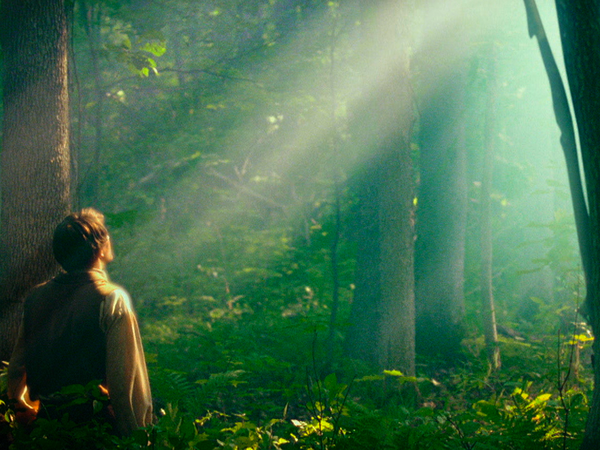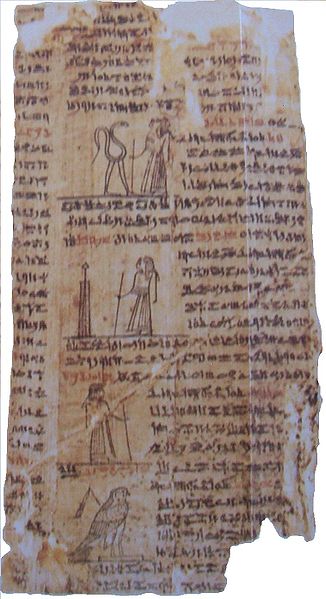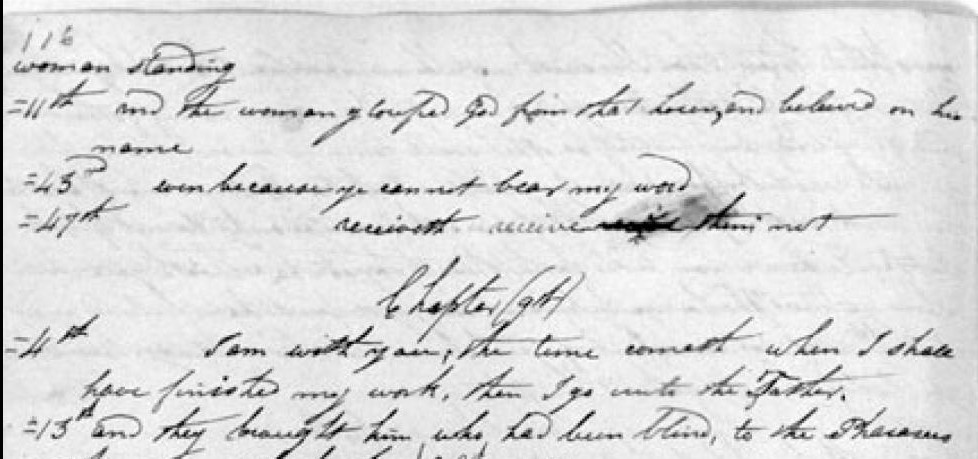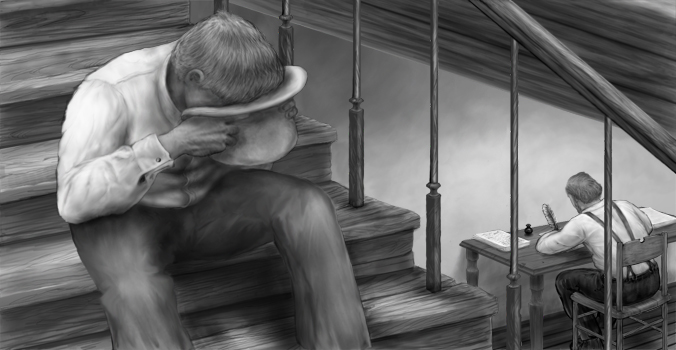Question
Gramps,
In the original first vision account by Joseph Smith’s own hand, he states that only Christ visited him. No mention of the Father and Son. Why then did this change later to be the Father and Son visiting Joseph? Also, why are there 4 versions of the same story?
Jack
Answer
Dear Jack,
There are 4 primary versions of the story of the First Vision because Joseph recorded 3 official versions (in different circumstances) and his scribe happened to be with him during 1 private retelling. Besides these 4 there are a number of other secondary versions recorded by those who heard Joseph tell it first-hand. Because of the different circumstances and intents in each retelling (for the primary accounts) as well as different authorship (with the secondary accounts) no two accounts contain exactly the same detail – nor do they contain contradictory details.
If you have the Gospel Library app, then you can read the 4 accounts of the First Vision that originate from Joseph Smith. Scroll down and select “Church History” and then “Joseph Smith’s Accounts of the First Vision”. It contains the same information as this page in the Joseph Smith Papers site (just select your language of choice). As an exercise, you may want to capture the elements shared in each account in a table and compare them across the different accounts. I think it will amaze you instead to see the many similarities. The differences will then serve to flesh out details of the story.
Unfortunately, what’s lacking in these resources is context providing the provenance of these accounts. You can find that on Joseph Smith Papers site with links to the original documents. Dean C. Jessee, in his article “The Earliest Documented Accounts of Joseph Smith’s First Vision“, provides context on the record-keeping practice of those decades and additional second-hand accounts of Joseph reciting the details of the First Vision.
Joseph, in the official 1838 account (the one found in the Pearl of Great Price), tells us why he was so reluctant to share the details of his 1820 vision. Recognizing the sacredness of his experience, he didn’t tell his mother and instead shared it with a spiritual mentor. Imagine the alarm of this young teenager, when his telling is treated “with contempt” and is told “it was all of the devil…. [T]elling the story had excited a great deal of prejudice … and was the cause of great persecution, which continued to increase.” (JS-H 1:21-22). Given the trouble that this vision caused, it is little wonder that 3 years later, when Moroni’s several visits prevented Joseph from attending to his farm labors, he had to be commanded to share the new vision with his father.
The hubbub continued to follow Joseph and so he only shared publicly those things which needed to be public. When the Church was organized in 1830, he shared a simplified version of his life from 1820 – 1823 that “after it was truly manifested … that he had received a remission of his sins, he was entangled again in the vanities of the world” (D&C 20:5). From there, he then testifies of the miraculous forthcoming of The Book of Mormon with more detail – the book already printed and the angel attested to by 3 others. The same day the Church was organized, Joseph was instructed by the Lord to keep a record (D&C 21:1) but did not get to this for another two years. This was the setting for the 1832 account.
The 1832 account contains Joseph’s handwriting (portions of it were written by his scribe, just like the others). It was recorded in a record book and seems to have been intended as an internal document. That is, Joseph knew there needed to be an official history, but did not seem to see a need for an official public history. The public narrative would largely revolve around the coming forth of The Book of Mormon and the textual revelations Joseph received. In this internal 1832 account, Joseph speaks of the years he spent concerned for his salvation, the alarm he felt realizing the fallen state of the world, the stirrings of a testimony of God when pondering nature. He then goes into “the wilderness” where his prayer is answered and he sees the Lord, who confirms that apostasy the world is in, but assures Joseph that his sins are forgiven him. The emphasis here, like the 1830 testimony, is that Joseph was forgiven of his sins by the Lord. He then uses this to segue into his period of foibles which precede Moroni coming to assure him that his sins have been forgiven him once again (before telling Joseph about the gold plates).
The 1835 account is a bit of an anomaly of the four. Of the primary accounts, it is the only one that is a conversational retelling and not any sort of official history. As such, it highlights understandable differences. Joseph was entertaining a stranger passing through who showed interest in godly matters and particularly in the rise of the Church. Joseph then accordingly told him an account of the First Vision, but here young Joseph is trying to discern the right versus the wrong of religions. Thus, he goes into some detail on getting attacked by the powers of darkness, following the visitation of angels (plural!), one of which tells him his sins are forgiven and then testifies of Christ. Having been visited by angels, and having clear discernment between darkness and light, Joseph is then visited by Moroni (he notes Years have passed but places these two angelic visits only words apart). An appropriate end of this background story is that Joseph discerns that his visitor is filled with darkness and evicts him from his home. All talk of God the Father or the Son is missing in this account. Some critics like to use an evolutionary approach to the story of the First Vision – that Joseph added elements with each retelling – but this period shows that Joseph is much more inclined to test the waters first and only share the sacred with those likely to receive it.
During the 1835 – 1836 years, Joseph may have shared his First Vision experience with the saints in public sermons. Unfortunately we do not have the text of those sermons, but a synopsis can be found in Jessee’s article. By this time, Joseph (along with Sidney Rigdon) had seen Jesus “on the right hand of God” (D&C 76:24). This public 1832 record of the Father and the Son, and the divisions in the afterlife, was so significant the saints referred to it as The Vision. As the story of the 1820 visitation came out, the saints distinguished it as The First Vision.
The 1838 and 1842 accounts were intended to be public accounts and were shared openly. Joseph opened up to those inside and outside the Church because he felt “induced” to do so. “Owing to the many reports which have been put in circulation by evil-disposed and designing persons,” Joseph took matters into his own hands to tell the story on his terms, “to disabuse the public mind, and put all inquirers of truth in possession of the fact.” (JS-H 1:1). Modern saints are most familiar with 1838 account in our scriptures. It includes details of Joseph searching for true religion and not finding it, the devil’s powerful attempt at blocking prayer, a prophetic theophany of God the Father introducing His Son, the Son’s testimony that there is no true church on the earth and the corruption that has crept in. The foibles once again return and forgiveness is sought, and forgiveness is assured through the visitation of the angel Moroni who then tells him of the plates and the great work ahead. The 1842 account was prepared as part of the Wentworth Letter (where the Articles of Faith were originally printed) and is similar to the 1838 account with the search for true religion, but skips over Satan’s attack and includes only a brief message from Jesus (although the Father is there). That message is that the fulness of the gospel would eventually be given to Joseph. He then shares the account of Moroni’s visit and details surrounding The Book of Mormon.
Once an official version of the First Vision was published, Joseph’s personal retelling starts showing up and the details here are varied as well. Orson Pratt and Orson Hyde published pamphlets that included the story in 1840 and 1842, respectively (the Father and the Son are in both). Levi Richards summarizes a sermon from 1843 (Joseph’s prayer is answered by the Lord, but no mention of the Father and it’s unclear if the Son appears). Alexander Neibaur records a private conversation with Joseph in 1844 that includes mention of the Savior (but not the Father). A reporter passing through Nauvoo in 1843 records a version that includes the Father and the Son (once again, see Jessee’s article for details). The discrepancies here can either be attributed to the diversity of the record-keepers, or to Joseph himself.
The 1838 account is by far the longest and contains the most details. Other accounts contain details not found in the official public version, but the Joseph Smith-History contains by far the most content. It comes as no surprise then that the other accounts (including the 1832), as brief retellings, lack many of the details in the official record (revival meetings, James 1:5, Satan’s attack, presence of the Father, presence of the Son, the forgiveness of sins, scriptures quoted, etc.). Additionally, we find in the personal journals of the time that Joseph continued to show some reluctance in openly sharing details of the the First Vision until he felt compelled to share it with the world. And even then, details differed in the brief accounts (the focus tended to quickly move to the more attested Moroni and the tangible Book of Mormon). While this may have been because of the different authors, it is not unlikely that Joseph varied his telling by referring to the official “two personages” (which would include the Father), and the more colloquial “the Lord” (which would just be the Son by the strictest reading). Further, if he only focused on the resulting answer, the strict reading would leave him unvisited. In this respect, the 1832 account fits neatly in with the private retellings of the next decade.
The evolutionary model describing the origin of the First Vision (including the progressive addition of the Father) doesn’t bear scrutiny when comparing other elements of the story and when adding in the secondary accounts. For instance, looking at the other elements in the primary accounts we see the post-1832 addition of Satan’s attack, but then it abruptly disappears in the Wentworth letter. And once we add in the secondary accounts, we find that Joseph talks about these different elements throughout his life, to those prepared to hear it. The First Vision is usually coupled with the story of Moroni and the gold plates. In fact, it often serves as an introduction to that story which is also given far more literary space – so Joseph may be apt to omit details in order to move along to Moroni’s visit. It is only in the official 1838 account that Joseph takes the time to include many details of the First Vision, so it’s little wonder that elements of the story may seem novel when comparing it with earlier and later accounts.
If we reconstructed the history based on what other accounts do not include, we would simply state that Joseph prayed and the Lord answered his prayer, telling him the world was corrupt. It would perhaps be better to take an additive approach, supplementing to the official version details included in some of the other accounts (witness of God found in nature, increasing intensity of Satan’s attack, the intensity of the light as fire, visitation of angels, etc.).
Gramps
21







